Update 3 from the studio
Restoration of 'The Reixach'
January 2023
There is news from the studio where our "enthroned Madonna and Child" by Joan Reixach is being restored. Work has been hard and we are happy to share the latest findings and news. Scroll on quickly and discover the latest developments.
Gray layer
Below the varnish layer, there was a grayish, grayish layer on the paint surface. The composition of this layer was investigated in cooperation with the National Cultural Heritage Agency. Previous research (described in the previous update) was inconclusive about the composition and origin of this layer. Since we wanted clarity on this before deciding on the removal of the layer, we took and examined more samples. This examination revealed that the gray layer is not original.
In a cross section from the mantle of John the Baptist (in the top scene), it can be seen that there is a layer between the gray layer and the paint surface. In the cross section, a thicker pink paint layer is visible, with a transparent, unpigmented layer on top. This layer fluoresces when exposed to UV radiation. On top of this layer is the gray layer that we also recognize in other samples. Therefore, since this layer is between the original surface and the gray layer, the gray layer cannot be an original varnish layer.
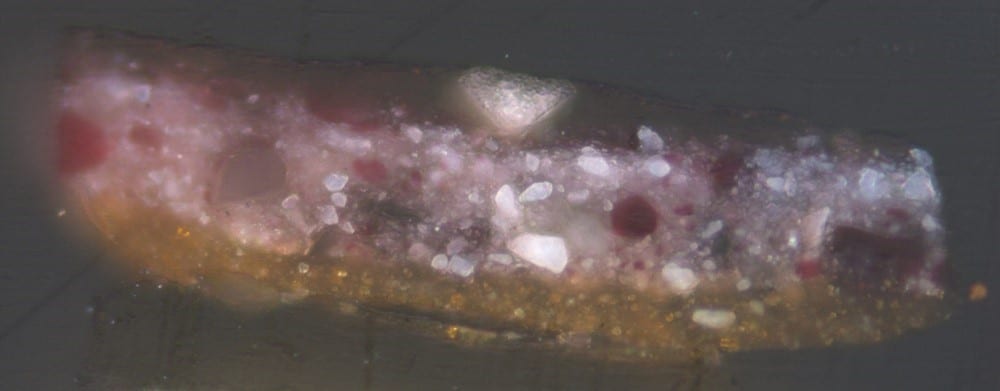
x08, 400x bright field
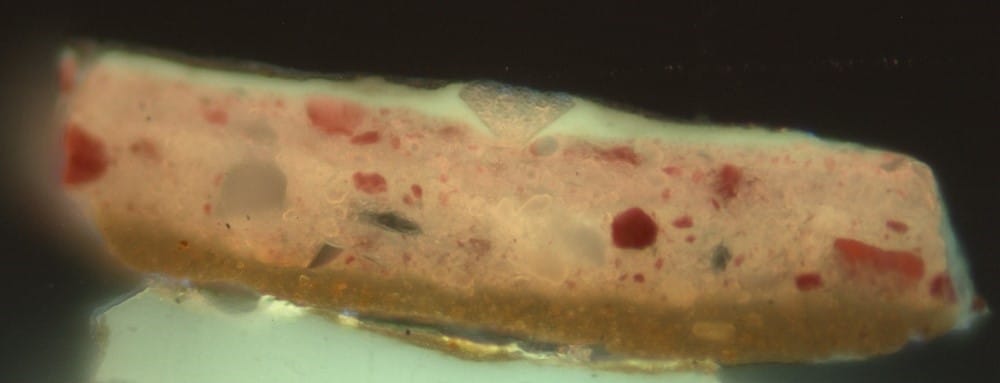
x08, 400x UV
There is an unpigmented, transparent layer on the top pink paint layer. Under UV radiation, this layer fluoresces. The top, dark layer is the gray haze on the surface.
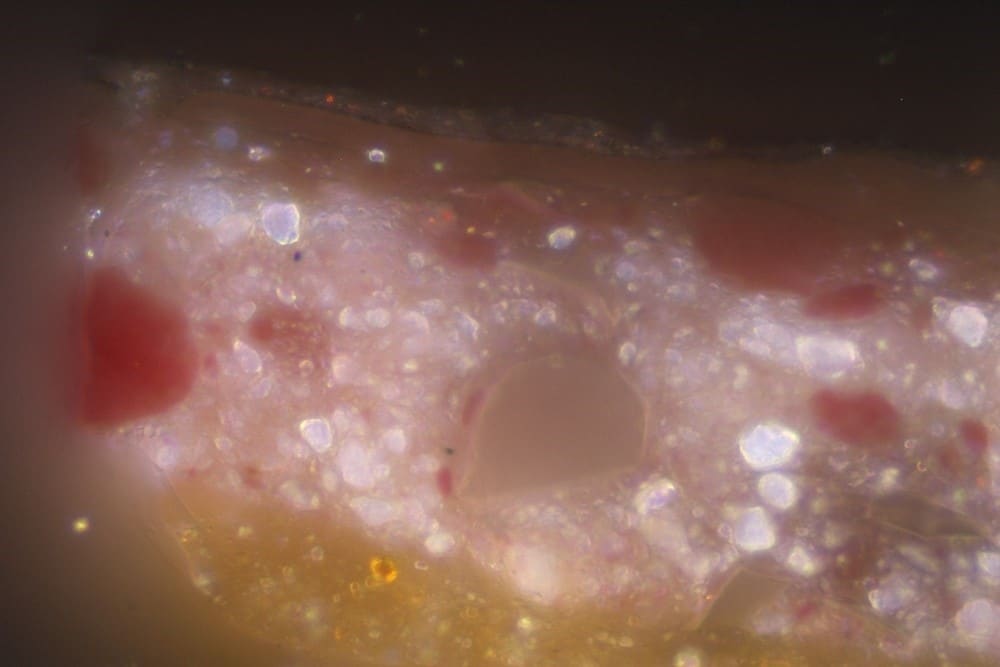
x08, 1000x bright field
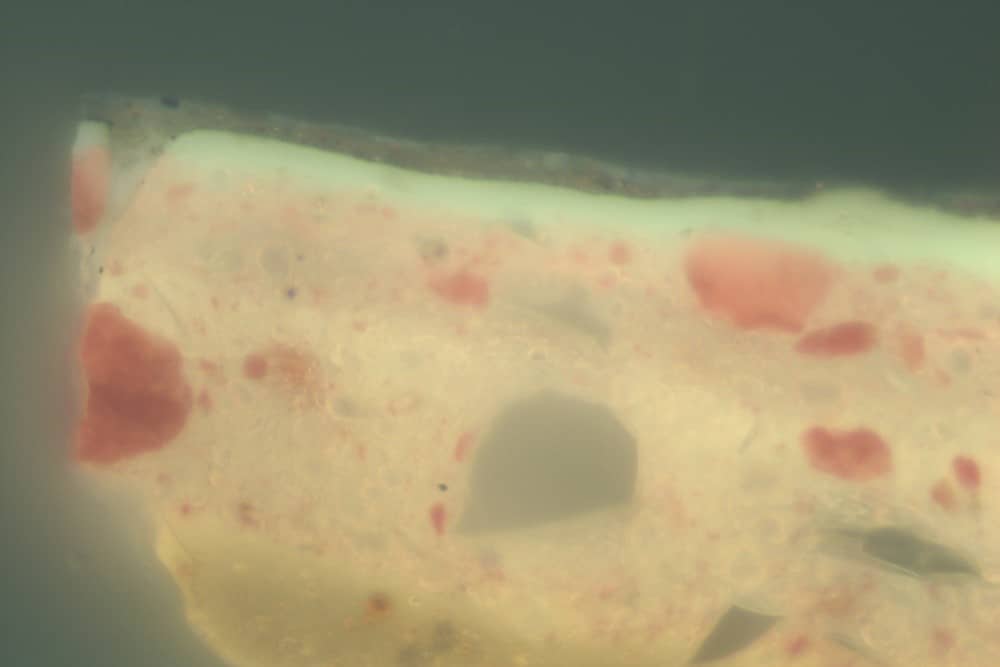
x08, 1000x UV
These detail photos, taken at higher magnification, show that the gray surface layer has run into a crack in the paint surface.
By examining other paint samples, it became clear that the gray layer was formed after the paint layer became damaged. Had the gray layer been original, it would have been damaged along with the paint layer. In addition, varnish was also visible in these samples between the original paint surface and the gray haze, again confirming that it is not original.

x09, 400x bright field

X09, 400x UV
The top blue paint layer has become damaged and worn. The paint surface has broken up and large particles of azurite protrude from the surface. Under UV radiation, it can be seen that varnish has been drawn into the paint layer, between the pigment particles. The gray layer has formed on top of this damaged blue paint layer.
FTIR-ATR examination on the cross-sections with the gray layer in them (conducted by Dr. Suzan de Groot, National Cultural Heritage Agency), showed that the gray layer consists mainly of gypsum particles. No protein was found in the gray layer. This once again confirms that it is not an original, aged protein varnish.
Taking off the gray layer
After this further investigation, in consultation with the guidance committee, it was decided to remove the gray layer. It was clear from tests that this could be done safely. The result of this treatment is very nice: the colors become much brighter and more saturated. There is also a greatly improved depth effect, in the representation at the top but also in the folding of the robes at the bottom.

Detail of pink mantle John the Baptist before restoration.

Detail pink cloak John the Baptist during decrease gray layer.
Applying new coat of varnish
After removing all of the non-original additions (such as the varnish layer, old retouchings and the gray layer), we can begin to rebuild the painting. The first step in this is to apply a new layer of varnish. This layer serves to give the paint surface a good gloss and saturation. In addition, the varnish layer also acts as protection for the paint surface and as a separation between the original paint layers and our additions. A special feature of this painting is the use of gold leaf. Originally, there was a difference between the highly shiny gilded surfaces and the softer silk sheen of the paint layers. To preserve this difference, we did not apply the varnish layer over the gold leaf, but only to the paint layers.
Retouch
Open seams and deeper voids are filled before starting retouching. By applying fills, there is no longer a visible level difference between the paint surface and the lacunae. Currently, we are in the process of retouching. This involves making damages and fills invisible by giving them the same color as the surrounding area. We use very small brushes for this, which can be used to dot very precisely.
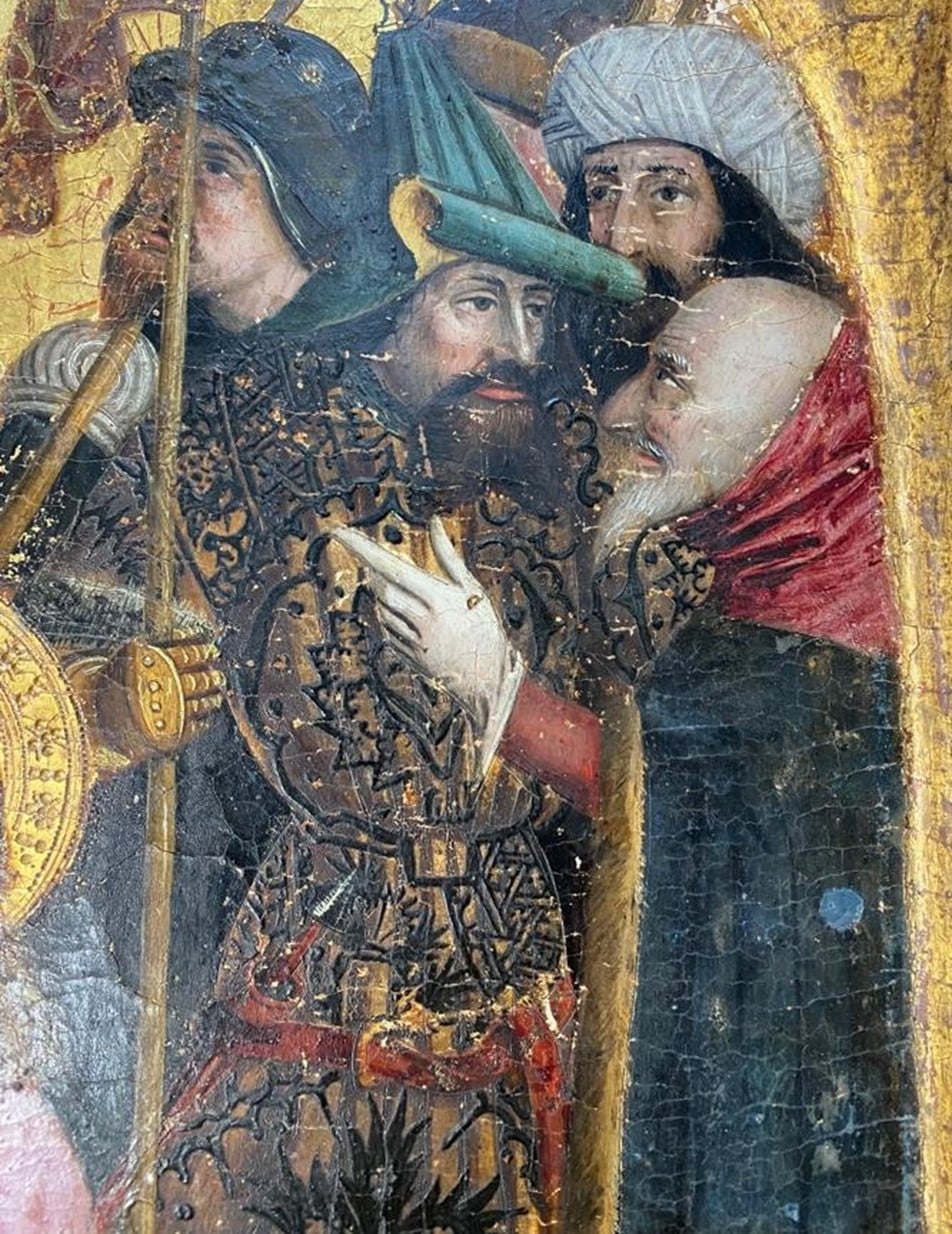
Detail for retouching.
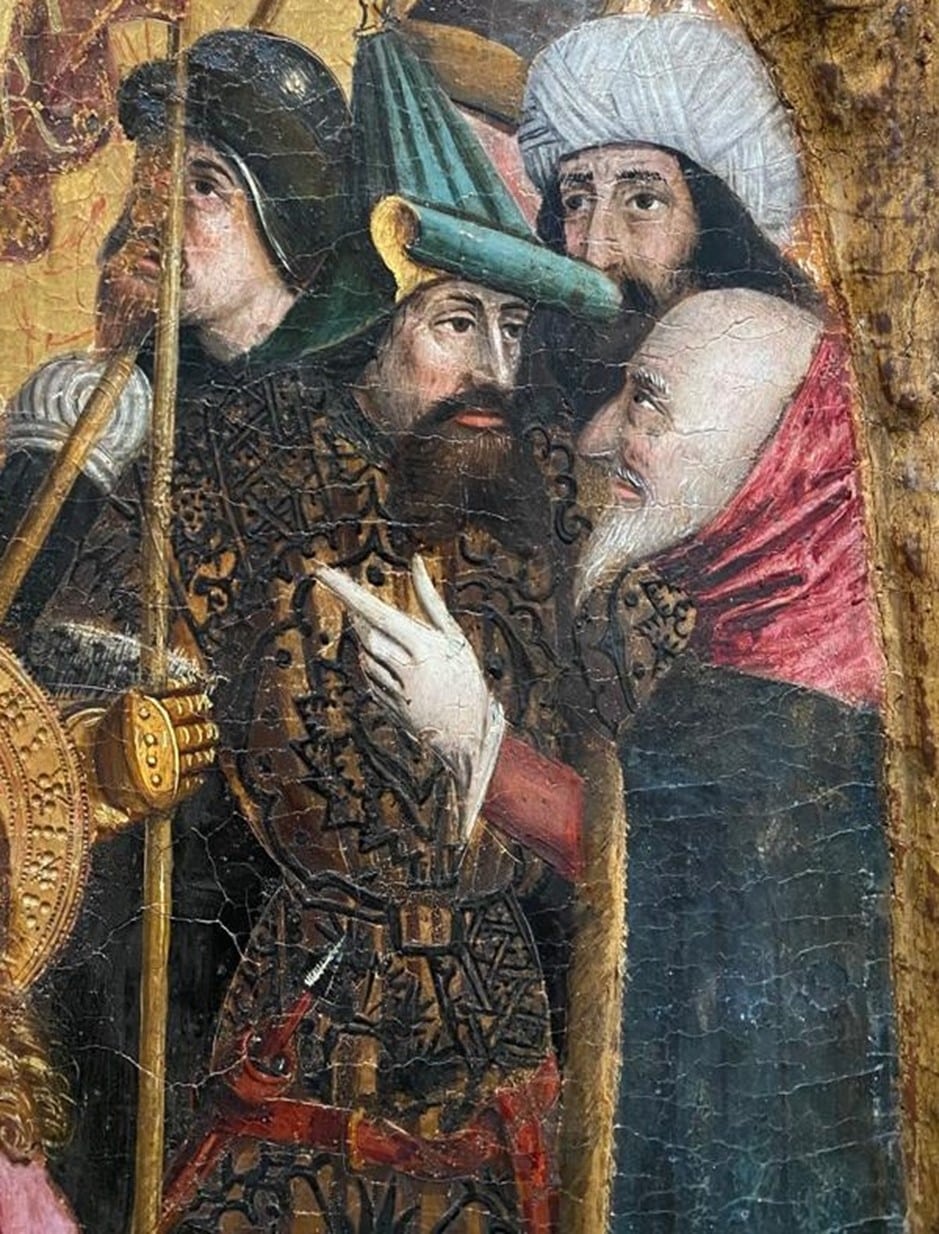
Detail during retouching.
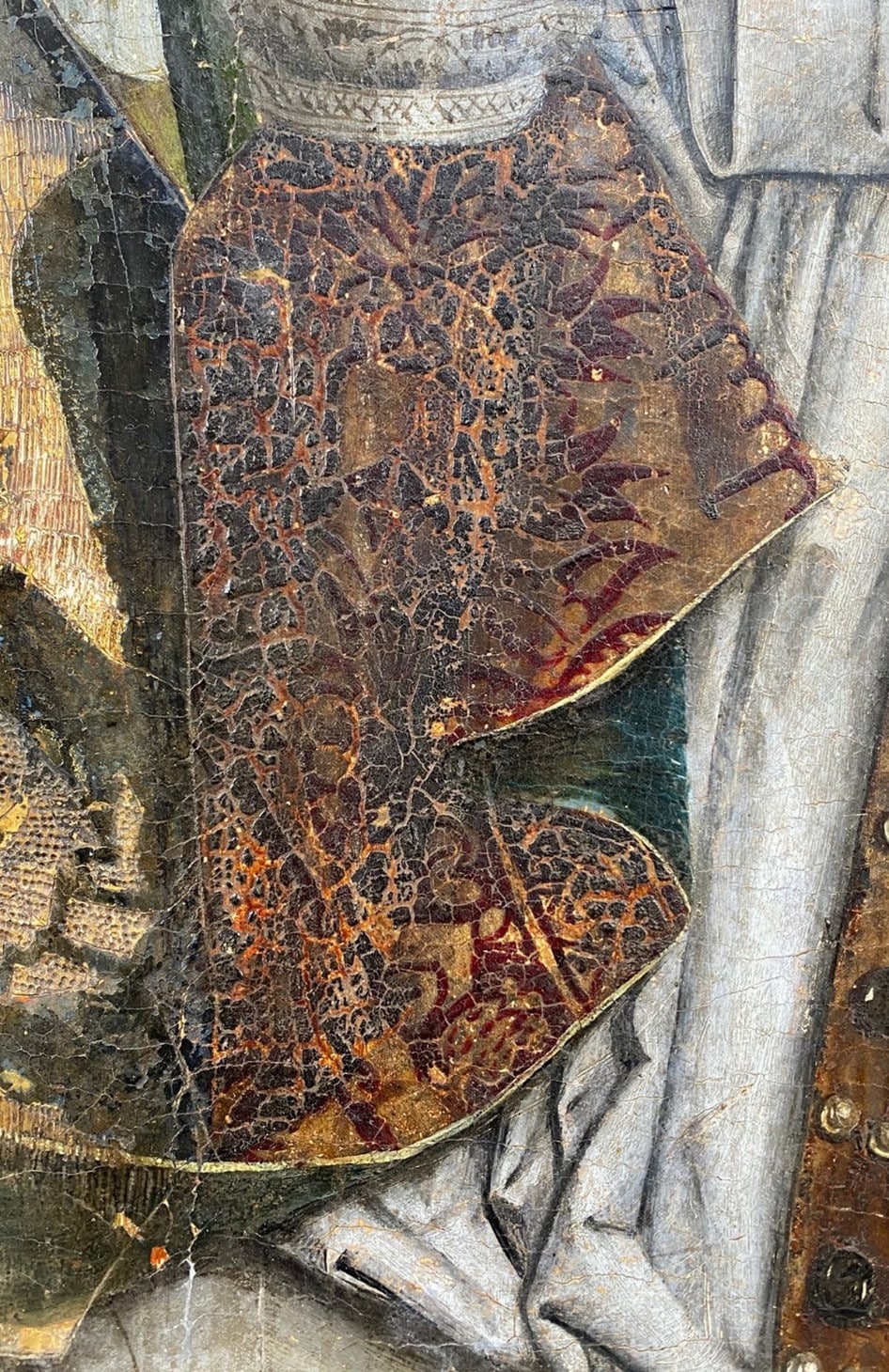
Detail for retouching.
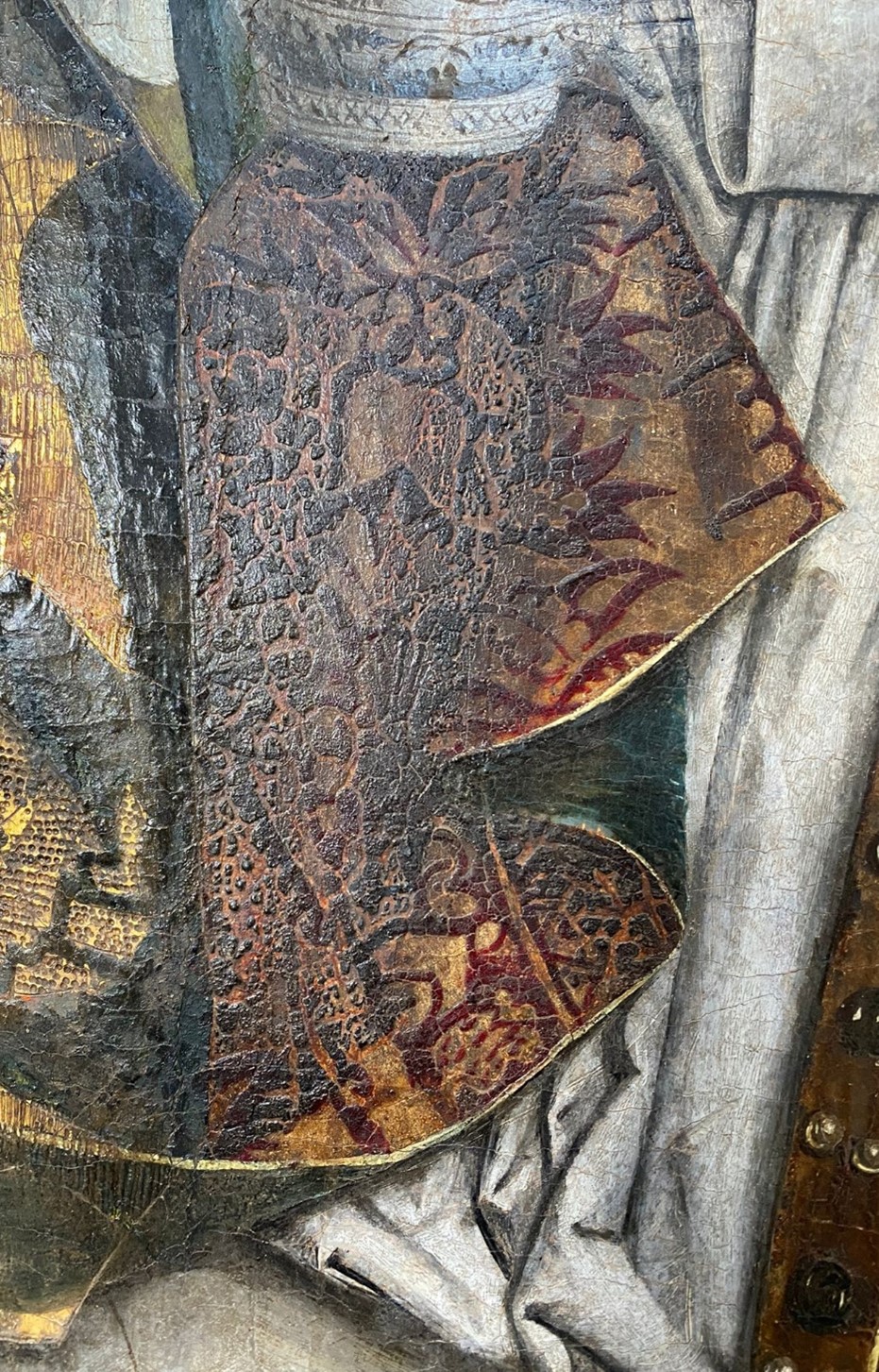
Detail during retouching.
Reversible
When restoring paintings, we strive for reversibility. This means that the materials we add now should always be easy to remove again. For this reason, we work with synthetic resins as varnishes and retouching mediums. The aging properties of these materials have been studied. With aging, these materials will not change in such a way that they become discolored, unstable or difficult to remove. Also, in the future, it should always be clear which materials are original and which are later additions. If we were to use the same materials as the artist, it would become increasingly difficult to distinguish between them after years of aging. Thus, an oil painting is not retouched with oil paint. In addition, the entire treatment is documented in a restoration report, with photos of before, during and after restoration.
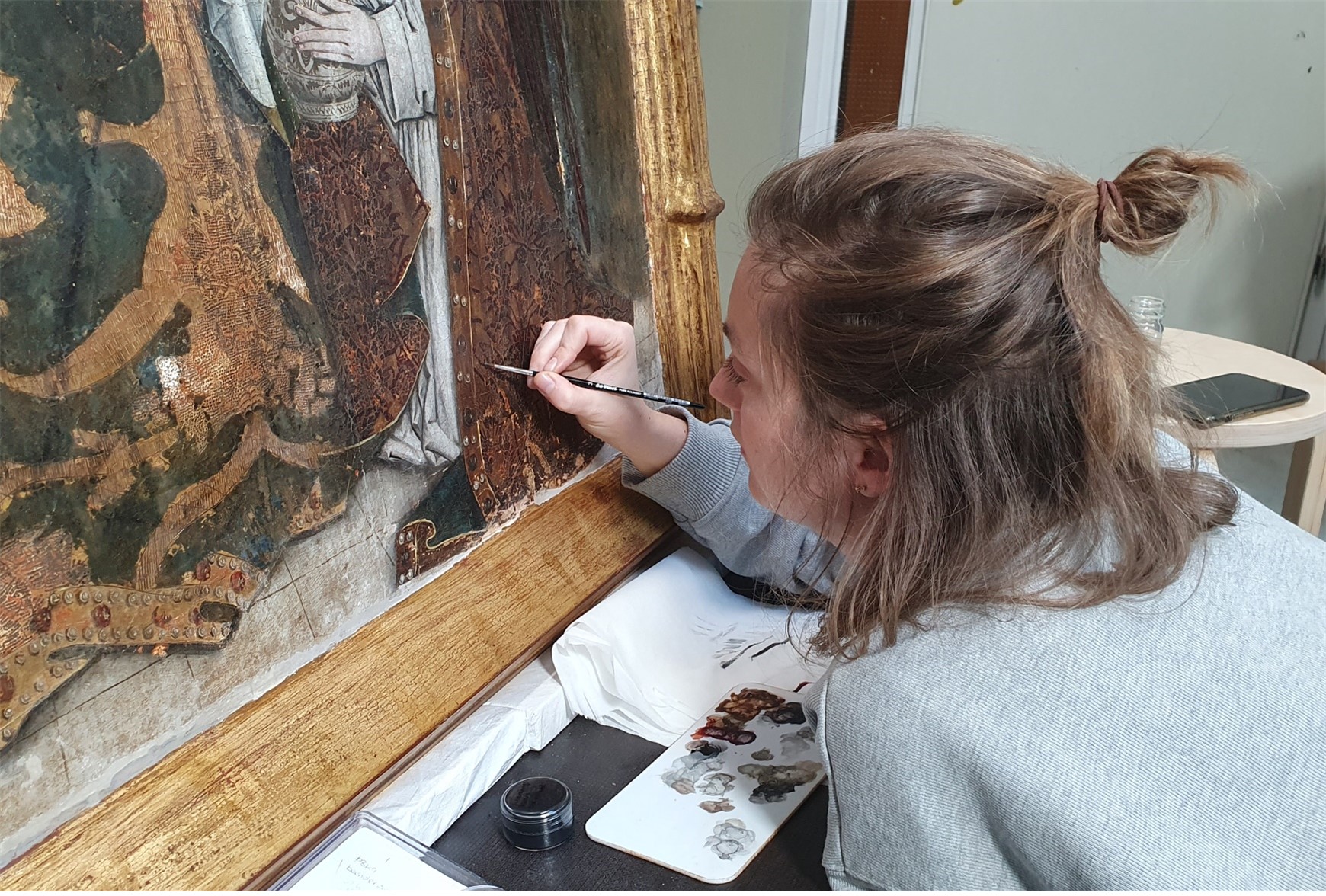
Restorers:
Melissa Daugherty MA, PD Res
Marya Albrecht MA, PD Res
Gert van Gerven MA
